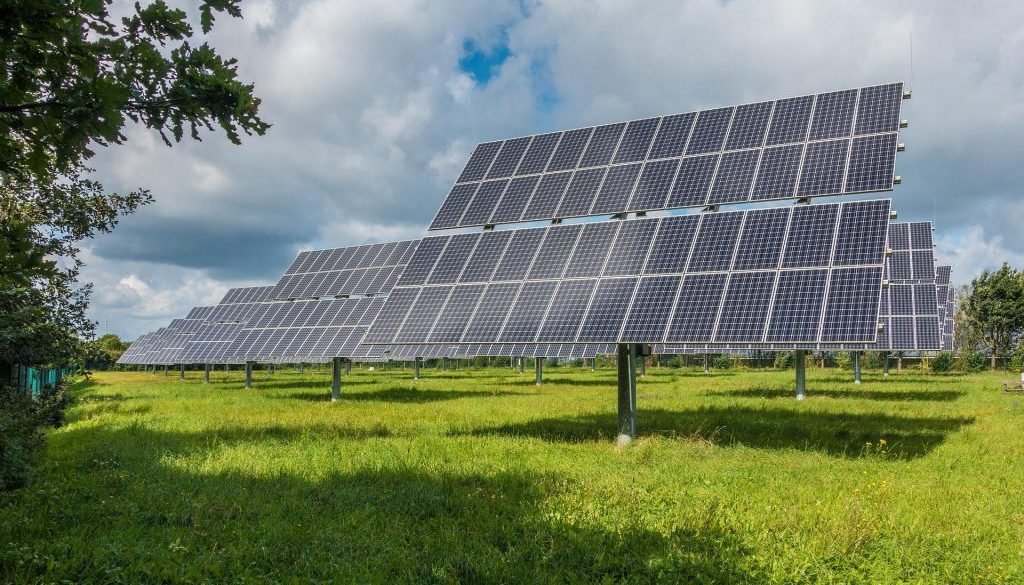Solar photovoltaic technology Basics, best information from the Department of energy.
Table of Contents
Solar Cell Foundations
The most powerful source of energy is solar photovoltaic, which is quickly replaced by nature. Because of this, it is referred to as a “renewable energy” or “sustainable energy” source. A multitude of methods is used to convert solar energy into heat and electricity in order to benefit from it. Because solar photovoltaic is a natural energy source that may be used more effectively and intelligently, it entails “energy conservation” in its utilization. One such example is the solar cell, which is defined as follows:
Describe a solar cell.

A solar cell, also known as a photovoltaic (PV) cell, is a device that converts sunlight directly into energy. It is built of semiconductor materials including silicon, gallium arsenide, and cadmium telluride, among others. Free electrons and holes are produced at positive/negative junctions when solar cells absorb light. Current is provided to operate DC electrical equipment if the positive and negative terminals of the solar cell are linked.
kind of solar cells

There are three main cell kinds, which are categorized by semiconductor and manufacturing methods.
one silicon crystal PV module
Amorphous Silicon PV Module Polycrystalline Silicon PV Module
- Crystalline Silicon PV Module: PV modules are made from one kind of crystalline silicon (c-Si), also known as monocrystalline silicon, and another type, multi-crystalline silicon, also known as polycrystalline silicon. Both silicon PV modules have high conversion efficiencies that range from 10 to 12 percent on average, while the polycrystalline silicon PV module has a lower conversion efficiency than the single crystalline silicon PV module.
Amorphous silicon (a-Si) PV modules, also known as thin-film silicon PV modules, are able to absorb light more efficiently than crystalline silicon PV modules, allowing them to be made thinner. It is appropriate for any application where both low cost and great efficiency are not priorities. Around 6% is the average efficiency of amorphous silicon PV modules. - Hybrid Silicon PV Module: This kind of module has thin layers of amorphous silicon around single-crystalline silicon, which offers exceptional sensitivity to low light or indirect light. The maximum degree of conversion efficiency is found in hybrid silicon PV modules, which is about 17 percent.
structure of a solar cell
The most common semiconductor material used today to make solar cells is silicon, which has certain benefits such being readily available in nature, not polluting, not damaging the environment, and being simple to melt, handle, and shape into monocrystalline silicon form, among others. The typical silicon large-area p-n junction solar cell has this configuration.
How do solar cells function?
The solar cell produces electrons and holes as charge carriers when sunlight hits the surface. Some positive charges (holes) are separated from negative charges by the internal field created by the junction (electrons). Electrons are swept into the negative, or n-layer, whereas holes are swept into the positive, or p-layer. When a circuit is created, free electrons must flow through the load in order to recombine with positive holes; under light, current may be generated from the cells.
To boost current, the individual solar cells are joined together to form a module (also known as a “solar module” or “PV module”), and the modules are then combined in an array (also known as a “solar array” or “PV array”). Solar arrays are linked in a number of ways depending on the required current or voltage:
The output current will rise if the solar panels are linked in series.
The output voltage will rise if the solar arrays are linked in series.
PV solar technology
Solar cells can only be used with DC equipment since they create DC. Solar photovoltaic systems also need extra components if alternating current (AC) is required for AC equipment or if backup energy is required. These items, which are renewable energy or energy-saving devices and are specifically designed to integrate into solar PV systems, may comprise one or more components depending on the kind of application. The solar photovoltaic system’s parts include
- The solar module, which converts sunlight directly into direct current (DC) power, is a crucial part of any solar PV system.
- The battery is charged by the solar charge controller, which also conducts regulated discharges and protects the battery from overcharging.
- Batteries store the power generated by solar panels so that it may be used for various tasks at night or when the sun is not visible.
- The inverter, which transforms solar arrays’ DC power output into AC for AC appliances, is a crucial part of any solar PV system.
- Lightning protection guards against surges of high voltage that might harm electrical equipment. It is necessary for large-scale, crucial solar PV systems with effective grounding.
solar cell benefits
A clean, non-polluting, environmentally acceptable energy source is produced by solar cells or photovoltaic cells. Because it only utilizes sunlight as fuel, it produces no waste or burning while it functions, and it has no moving parts. It reduces the accumulation of gases produced by fuel, coal, and fossil fuel-burning power plants, including carbon monoxide, sulfur dioxide, hydrocarbons, and nitrogen, among others. All lessen how much energy has an influence on environmental issues including the greenhouse effect, global warming, acid rain, and air pollution, among others. It is portable and simple to install. Due to its modular design, it may be built in any size needed. Additionally, it has a long lifespan (more than 30 years) and constant efficiency with little maintenance required.
uses for solar cells
Electricity, electric gate openers, security systems, ventilators, water pumps, water filters, indoor and outdoor lighting systems for homes, etc.
system of lights
Lighting for bus stops, phone booths, billboards, parking lots, indoor and outdoor areas, and streets, among other things.
a water pump
Consumption, public services, irrigating mines, farming, and watering cattle, among other things.
method for charging batteries
Emergency power systems, battery charging stations for small towns, power supplies for lights and domestic appliances, etc.
Agriculture
water pumps, fumigators for agricultural goods, thrashing equipment, water sprayers, etc.
Cattle
Pumping of water, fish farming oxygen system, bug trap illumination, etc.
health facility
Medicines, vaccines, and other medical supplies may be stored in refrigerators and cold boxes, respectively.
Communication
a beacon navigation aid, an air navigational aid, an air warning light, a lighthouse, an illuminated road sign, a railroad crossing sign, street lighting, and an emergency beacon. - Solar photovoltaic Solar photovoltaic Solar photovoltaic Solar photovoltaic Solar photovoltaic Solar photovoltaic Solar photovoltaic Solar photovoltaic



